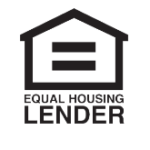Chris Andaya
When applying for a mortgage, borrowers will eventually receive a Closing Disclosure form from their lender shortly before closing on the home. This document is distinct from the Loan Estimate, which is a summary of loan terms and costs received within three business days of applying for a mortgage. The Closing Disclosure, on the other hand, provides a more detailed description of the loan’s terms, including projected payments, costs at closing, loan disclosures, and other necessary information.
It’s critical to carefully review the Closing Disclosure because, once signed, it is legally binding, and borrowers will be held accountable to the conditions of the mortgage. It’s also important to compare the Closing Disclosure to the original Loan Estimate and flag any discrepancies with the lender. While the document may be long and complex, it’s necessary to fully comprehend its contents and financial implications.
Loan Estimate vs. Closing Disclosure
A Loan Estimate is a three-page document provided by the lender within three business days after a borrower applies for a mortgage. It contains information on the loan terms, costs, and payments. It also includes the loan repayment schedule, an estimate of monthly mortgage payments, and any balloon payments, prepayment penalties, or other payments and penalties.
The Closing Disclosure is a five-page document that provides the same information as the Loan Estimate. However, once a borrower signs and returns the Closing Disclosure, they cannot make any changes. It is important to compare the Closing Disclosure to the original Loan Estimate and address any discrepancies with the lender before signing it.
Why the Closing Disclosure is Important
The Closing Disclosure is an essential document that you should review in-depth before signing. Here are a few reasons why:
- Understanding Loan Terms and Requirements
By reviewing the Closing Disclosure, you can get a clear understanding of the terms and requirements of your mortgage loan. Signing the Closing Disclosure means you agree to all the terms and requirements outlined in the document. Therefore, you need to read and understand everything stated in the document before signing it.
- Comparing Loan Terms and Costs
The Closing Disclosure gives you a chance to compare the loan terms and costs of your mortgage loan to the Loan Estimate provided by your lender. Reviewing this document will enable you to identify any discrepancies and bring them up with your lender before signing the Closing Disclosure.
- Repayment Plan and Payment Projection
The Closing Disclosure provides you with a repayment plan and payment projection for your mortgage. This information is crucial because it will help you financially plan to start making payments on your mortgage.
What is in A Closing Disclosure?
The Closing Disclosure is a five-page form that includes information about the mortgage loan term, mortgage projected payments, costs at closing, loan costs and other costs, necessary cash to close, summaries of transactions, loan disclosures, loan calculations, other disclosures, and contact information and signature lines at the end.
Loan Term
The loan term section of the Closing Disclosure describes the terms of the mortgage loan and details your mortgage loan payments and how long it will take to pay off your mortgage loan. The following are the five sections within the loan term section:
- Loan Amount
The loan amount is the amount of your mortgage loan after the down payment is subtracted and fees and costs that are rolled into your mortgage are added.
- Interest Rate
The interest rate is the percentage of the loan amount that you pay annually as interest, serving as the fee you pay your mortgage lender for borrowing money.
- Monthly Principal and Interest
The monthly principal and interest are the interest and principal you will pay, excluding mortgage insurance or escrow payments that will also be included in your monthly payments.
- Prepayment Penalty
In the event that a borrower pays off their mortgage early, some lenders charge a prepayment penalty.
- Balloon Payment
A balloon payment is a large payment due at the end of a mortgage loan term for a balloon loan. These types of loans and payments are not as common as they once were, and can be risky if borrowers are not prepared to pay the large one-time payment when the time comes.
Projected Payments
The projected payments section details the payment calculation, estimated total monthly payment, and estimated taxes, insurance, and assessments. The mortgage loan payment includes the principal and interest, mortgage insurance, and the estimated escrow to pay the homeowners’ insurance and property taxes.
Here’s a breakdown of each item in the projected payments section:
Payment Calculation: This section outlines how your monthly payment will be calculated. It will typically include the principal and interest, mortgage insurance, and estimated escrow payments for taxes and insurance. This calculation is based on the loan amount, interest rate, and term of the loan.
Estimated Total Monthly Payment: This is the total amount you can expect to pay each month for your mortgage loan, including principal, interest, mortgage insurance, and escrow payments for taxes and insurance.
Estimated Taxes, Insurance, and Assessments: This section provides an estimate of the additional expenses you’ll need to budget for on top of your mortgage payment. Taxes refer to property taxes, which are typically based on the assessed value of your home and are paid to your local government. Insurance refers to homeowners insurance, which protects your home and personal belongings from damage or loss. Assessments refer to any fees or charges levied by your homeowners association or other entities, such as for maintenance, repairs, or community amenities.
Mortgage Loan Payment: This is the portion of your monthly payment that goes toward paying off your mortgage loan. It includes the principal and interest, as well as mortgage insurance if applicable. The principal is the amount of money you borrowed to purchase your home, and the interest is the cost of borrowing that money.
Mortgage Insurance: If you put down less than 20% of the home’s value as a down payment, your lender may require you to pay for mortgage insurance. This insurance protects the lender in case you default on your loan.
Estimated Escrow: This is an estimate of the amount of money you’ll need to set aside each month to pay for your property taxes and homeowners insurance. Your lender will hold these funds in an escrow account and pay these bills on your behalf when they come due.
Costs at Closing
Closing costs are expenses associated with finalizing a real estate transaction, which includes applying for and securing a mortgage loan. These expenses are paid by the buyer and can vary in amount depending on the property’s location, price, and other factors. The following are the different types of closing costs:
- Loan costs: These are fees charged by the lender to process and approve the mortgage loan application. Loan costs include origination fees, application fees, underwriting fees, and other similar charges.
- Origination fees: These are fees charged by the lender for processing the mortgage loan application, including paperwork, credit check, and other services. The origination fee is usually a percentage of the loan amount, typically 1% of the total loan amount.
- Application fees: These are fees charged by the lender for processing the mortgage loan application. They may cover the cost of obtaining a credit report, verifying income, and other administrative expenses.
- Underwriting fees: These are fees charged by the lender to cover the cost of evaluating the borrower’s creditworthiness and ability to repay the mortgage loan.
- Other costs: These include expenses that are not directly associated with the mortgage loan application but are necessary to complete the purchase of the home.
- Taxes and other government fees: These include transfer taxes, recording fees, and other charges levied by the state or local government for transferring ownership of the property.
- Prepaids: These are expenses that the borrower pays in advance, such as prepaid interest, prepaid insurance premiums, and prepaid property taxes.
- Initial escrow payment at closing: This is an amount paid at closing to establish an escrow account to cover future payments of property taxes and insurance premiums.
- Other costs: These include fees for obtaining a survey, title insurance, and other expenses related to the closing process.
The total amount of closing costs can range from 2% to 6% of the total mortgage loan amount, and it’s important to keep in mind that these expenses are typically paid upfront at closing. It’s important to carefully review the loan estimate and closing disclosure documents provided by the lender to understand the breakdown of these expenses and be prepared to pay them at closing.
Calculating Cash to Close
The Cash to Close section is a critical part of the closing process for a home purchase. It outlines the exact amount of money the borrower needs to bring to the closing table. The amount includes any deposits paid to the seller, such as earnest money, and any money the seller is putting toward closing costs (seller concessions). Here’s a closer look at each of these items:
Earnest money deposit: This is a payment made by the buyer to the seller to show their intent to purchase the property. The amount of the earnest money deposit varies but is typically around 1% to 3% of the purchase price. The earnest money deposit is applied toward the down payment or closing costs at closing.
Seller concessions: In some cases, the seller may agree to pay a portion of the closing costs, such as title insurance, recording fees, or transfer taxes. This is known as a seller concession, and it is negotiated during the purchase contract process. The amount of seller concessions can vary, but it is typically limited to a percentage of the purchase price.
Other closing costs: In addition to the earnest money deposit and seller concessions, there may be other closing costs that the borrower needs to pay. These can include loan origination fees, appraisal fees, credit report fees, title insurance, and other fees associated with the mortgage loan application and closing process.
All of these items are added together to determine the total cash needed to close the transaction. The borrower should receive a Closing Disclosure at least three business days before closing, which outlines the exact amount of cash needed to close. It’s important for the borrower to review the Closing Disclosure carefully and ask questions if anything is unclear.
Summaries of Transactions
The Summaries of Transactions section is a breakdown of the costs associated with the home purchase and displays the costs of both the borrower and the seller side by side. This section is included in the closing disclosure to provide an overview of the transaction and to ensure that both parties understand the costs associated with the purchase of the home. Here are some of the items that might be included in the Summaries of Transactions section:
Purchase Price: This is the price agreed upon by the buyer and seller for the home.
Closing Costs: This is the total amount of closing costs that the buyer is responsible for paying. This includes all of the fees and charges associated with obtaining the mortgage and closing on the home.
Seller Credits: This is the total amount of credits that the seller has agreed to give to the buyer to cover some or all of the closing costs.
Adjustments: This includes any prorated amounts for things like property taxes, homeowners association dues, and utility bills.
Prepaid Items: These are the costs associated with setting up the escrow account for property taxes, homeowners insurance, and mortgage insurance.
Cash to Close: This is the amount of money that the borrower needs to bring to the closing table to complete the transaction.
By displaying both the borrower’s and the seller’s costs side by side, the Summaries of Transactions section ensures that both parties have a clear understanding of the costs associated with the purchase of the home. It also provides an opportunity to identify any discrepancies or errors in the calculations before the transaction is completed.
In conclusion, the Closing Disclosure is a crucial document that borrowers need to review in detail before signing and returning it to their lender. It provides information on the loan terms, costs, and payments, and it is important to compare it to the original Loan Estimate and address any discrepancies with the lender before signing it.



